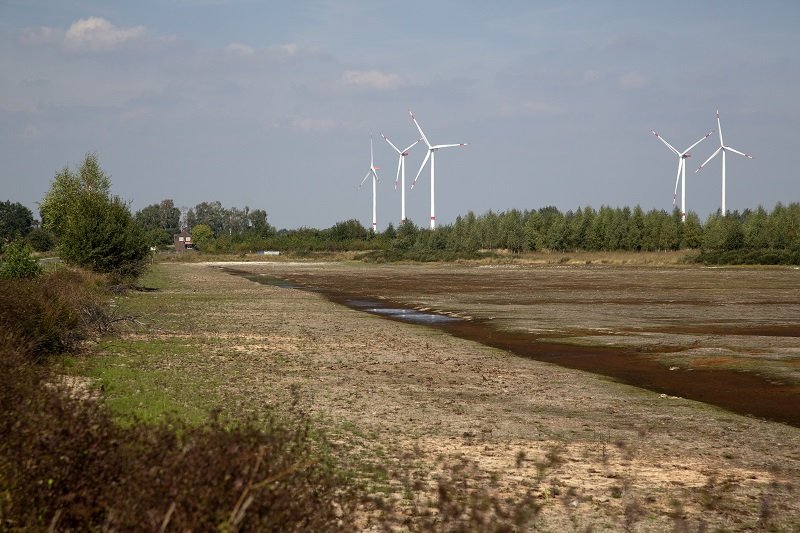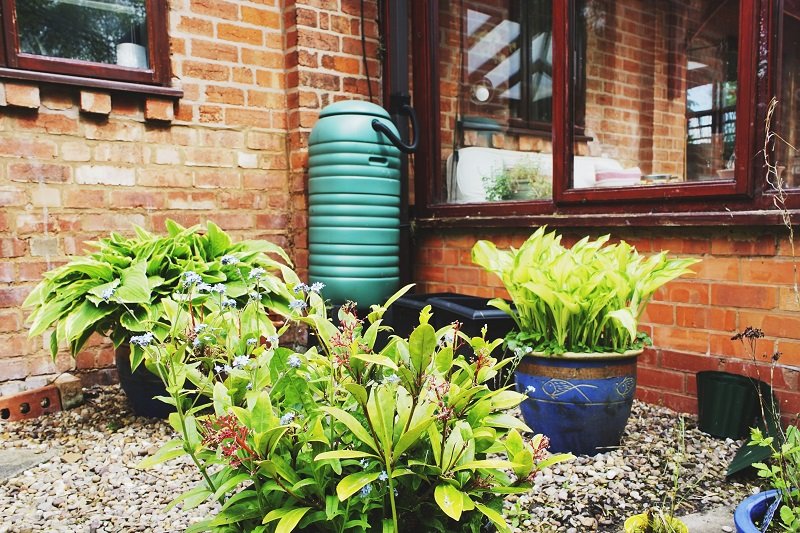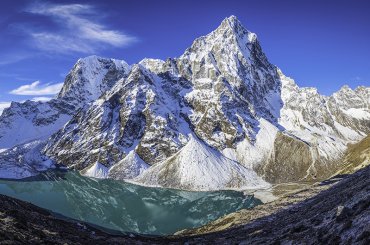The Netherlands must improve its groundwater management
Niko Wanders on the NRC climate blog
The Netherlands is quite good at channelling off surplus water. However, because the country now faces more frequent water shortages in summertime, we must also learn to embrace surface water and groundwater, says Niko Wanders, a hydrologist at Utrecht University.
This blog was published on 25 June 2020 on the climate blog of the NRC .
We Dutch have historically been experts in dealing with surplus water. We use pumping stations, buffers and other measures to help protect ourselves from flooding. If too much rain falls in a short time, or too much water flows into the country via the Rhine or Meuse, the water managers spring into action.
Traditionally – at least in the past – these water managers have not had as much to do during periods of drought, despite the fact that water shortages can cause serious problems as well. For instance, too little water can result in persistent wildfires, a loss of biodiversity and decreased agricultural yields.

In the regions of the Netherlands at a higher elevation than its rivers, farmers, drinking water companies and flora and fauna all depend strongly on groundwater to make it through dry spells. When there is a long period without rain, as was the case this spring, it means that farmers must use sprinkler irrigation to keep their crops alive. A drop in the water level of the major rivers directly impacts the shipping industry. It also exacerbates soil subsidence in peatlands.
Rain shortage
Drought often starts with a shortage of rain. First the topsoil dries out, after which the groundwater level drops, along with the water level in ditches, canals and rivers. But by that point, it is already too late. It is too expensive to transport water to dry areas, and the quantities of water needed are too great anyway. There is nothing to be done but wait for rain.
To prevent shortages, we must create reservoirs, which is easier said than done in a flat country like the Netherlands
If we want to prevent shortages, we must create reservoirs of stored water – yet this is easier said than done in a flat country like the Netherlands. Our largest lake, the IJsselmeer, has limited capacity and there is little space available elsewhere. The best place to store water is therefore in the groundwater supply itself.
By slowing the rate at which groundwater flows into ditches and ensuring more rainwater is retained in the soil rather than ending up in the sewage system, it is possible to build up extra reserves over time. We can also take steps to make conserving water more appealing for consumers.
An accurate picture of the Dutch groundwater is lacking, which makes prevention of droughts more difficult
To do this, however, we must have an accurate picture of the Dutch groundwater situation. This is currently lacking. Not enough daily measurements are being taken to let us monitor our groundwater levels effectively. We are also unsure of who extracts groundwater from under the soil, when this happens and how much water is used. Our first step, then, will have to be to gain a better insight into the status of our groundwater.
Another issue is that, as it currently stands, groundwater can be pumped up at practically no charge. All you need is a pump and you can extract as much water as you like. Both commercial farmers and private citizens take advantage of this for irrigation purposes. If we invest in increasing our water reserves, we must prevent those additional reserves from being pumped out as fast as we can store them. One way to do this would be to institute a pay-per-use system. This means that the more water you extract, the higher the fee per cubic metre. In that case, private consumers who use modest volumes of water would pay a low fee while large-scale users would face steep (or steeper) fees. Such a system would serve to discourage large-scale use, while the revenue generated in this way could be spent on measures to prevent further drought damage.
Water rights
Australia has taken this idea a step further by introducing a system of water rights. Everyone – farmers, drinking water companies and nature areas – owns the rights to a specific portion of the total groundwater supply. If you expect to need less water in a given year, you can sell those rights to someone else. If your demand increases, you will have to pay for the excess. The price of groundwater is higher during periods of drought than in times when there is a surplus.
In Australia, everyone owns the rights to a specific portion of the total groundwater supply, which makes users aware of the costs
As a result, users are aware of the costs associated with groundwater. Systems like this also encourage all parties to conserve as much of the supply as possible, because it keeps the price down. This, in turn, helps users take ownership of the problem – which can boost efforts to find sustainable solutions to water shortages.

While the Netherlands has yet to reach this point, that does not mean the Dutch are powerless to act. One good example is installing a rain barrel at the end of your drainpipe. This prevents valuable water from flowing directly into the sewer system. The water stored in the barrel can serve as a personal buffer for watering your garden in times drought. This benefits groundwater levels as well as the plants in your garden.
Although it may be only a small step, it demonstrates an appreciation for this natural resource.
Scientists from Utrecht University are reporting in the climate blog of the NRC on their research in the field of sustainability. They are united around the strategic theme of 'Pathways to Sustainability.

Urban nature pays dividends
Economist Helen Toxopeus advocates for more nature in our cities, since it is both cost-efficient and sustainable.

High time to step up the protection of our glaciers
Professor Walter Immerzeel argues that protection of water towers should be much higher on the agenda.



